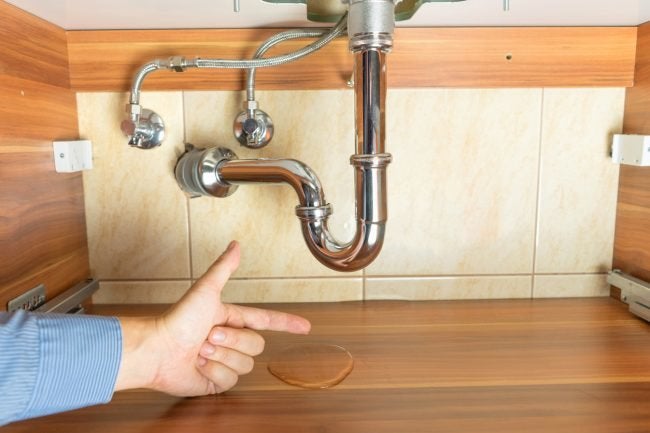How to Check If Your Home Has a Hidden Leak
How to Check If Your Home Has a Hidden Leak
Blog Article
What're your opinions about Finding hidden leaks?

Early discovery of leaking water lines can minimize a potential calamity. Some little water leakages might not be visible.
1. Analyze the Water Meter
Every home has a water meter. Examining it is a proven manner in which assists you discover leakages. For beginners, turn off all the water sources. Ensure nobody will purge, use the faucet, shower, run the cleaning maker or dish washer. From there, go to the meter and also watch if it will alter. Because no person is using it, there should be no movements. That indicates a fast-moving leakage if it moves. If you identify no changes, wait a hr or two and examine back once more. This indicates you may have a slow leakage that can also be underground.
2. Inspect Water Consumption
Examine your water expenses and track your water intake. As the one paying it, you must see if there are any kind of disparities. If you spot sudden changes, in spite of your intake being the same, it indicates that you have leakages in your plumbing system. Bear in mind, your water costs need to fall under the very same array each month. An unexpected spike in your expense shows a fast-moving leak.
A consistent boost every month, even with the very same routines, shows you have a slow leakage that's additionally gradually rising. Call a plumber to thoroughly examine your property, specifically if you really feel a cozy area on your floor with piping beneath.
3. Do a Food Coloring Examination
When it comes to water consumption, 30% comes from toilets. If the shade somehow infiltrates your dish during that time without flushing, there's a leakage between the storage tank and also dish.
4. Asses Outside Lines
Don't neglect to check your outdoor water lines also. Ought to water permeate out of the connection, you have a loosened rubber gasket. One little leakage can waste heaps of water and increase your water costs.
5. Check and Evaluate the Scenario
Property owners ought to make it a habit to check under the sink counters as well as also inside cupboards for any kind of bad odor or mold and mildew development. These two red flags suggest a leakage so prompt attention is called for. Doing routine assessments, even bi-annually, can conserve you from a significant problem.
Examine for discolorations and deteriorating as most pipelines and appliances have a life expectancy. If you believe dripping water lines in your plumbing system, don't wait for it to escalate.
Early detection of dripping water lines can alleviate a potential calamity. Some tiny water leakages may not be visible. Examining it is a guaranteed means that aids you uncover leaks. One little leakage can lose bunches of water and increase your water bill.
If you think dripping water lines in your plumbing system, don't wait for it to rise.
How to Know If Your Home Has a Hidden Leak
Water Meter Reveals Inexplicable Water Usage
If you’d like to test whether or not there’s a leak somewhere in your home, you can do this using your water meter. Here is how to conduct the test:
Don’t use any water in your home for at least 30 minutes; this also means not turning on faucets or water-using appliances.
Go outside, and check your water meter for activity.
If your water meter shows that there was activity, even though no one was using any water, this proves that there is a leak in your home.Visible Mold or Mildew Growth
Leaks behind walls create moist, dark environments that allow mold and mildew to grow and thrive. Eventually, you might see mold growth forming on the wall closest to a hidden leak.
If mold is growing in an area that receives a high amount of moisture, such as a bathroom, it may simply be an indication that better ventilation is needed. However, if you see mold growth on a wall or the ceiling in an area where you would not expect, you probably have a hidden leak.
Musty, Mildew Odor
Sometimes you might not be able to see the mold or mildew that is growing as a result of a leak. However, the smell can give the problem away just as easily. If you catch a whiff of something musty, there’s a good chance that old water is collecting somewhere in your home that you can’t see.
Stained/Warped Walls, Ceilings, or Floors
When your home soaks up water, a variety of red flags can become visible, including ceiling stains, bubbling drywall, warped walls, and sagging floors. While these issues can be caused by excess humidity, they can also be signs that a pipe or plumbing connection has started leaking behind your walls.
Inexplicably High Water Bill
After a while, you get a general sense for what your water bill should be. If you own a pool or sprinkler system, your bill will tend to be higher during summer. However, if you receive a water bill that seems especially high, and you can’t figure out what caused it, then you may have a hidden leak somewhere that’s increasing your bill.
https://www.plumbingjoint.com/blog/2019/july/how-to-know-if-your-home-has-a-hidden-leak/

We hope you enjoyed reading our topic on Hacks to detect leaks. Thank you for taking the time to read our post. For those who enjoyed reading our page if you please remember to pass it around. Thanks a lot for your time. Please stop by our blog back soon.
Report this page